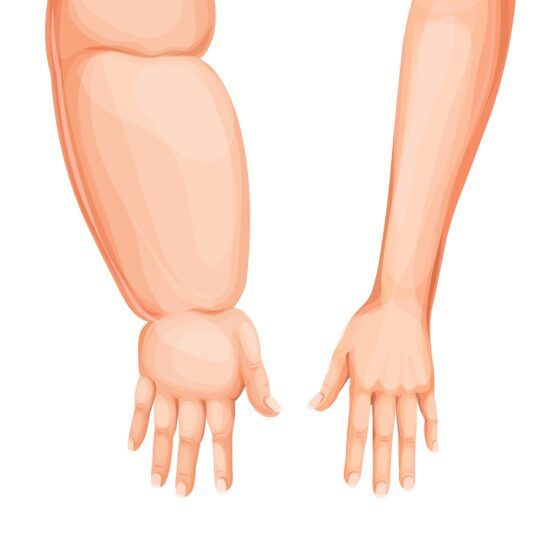Introduction
Lymphedema is a chronic condition that causes swelling, most often in the arms or legs. It occurs when the lymphatic system, a crucial part of the body’s immune and circulatory systems, is compromised. This system comprises a network of lymph nodes and vessels that transport lymph, a fluid rich in white blood cells, throughout the body.

When the lymphatic system is damaged or blocked, lymph fluid can accumulate in the tissues, leading to swelling. Lymphedema can significantly impact daily life, making it difficult to move the affected limb and increasing the risk of infections. Understanding the causes, symptoms, and treatment options for lymphedema is essential for effective management of this condition.
Symptoms of Lymphedema
Lymphedema typically presents as swelling in the affected limb, which may initially be soft and pitting, meaning that pressing on the skin leaves an indentation. As the condition progresses, the swelling can become firm and non-pitting. Other common symptoms include:
- A feeling of heaviness or tightness in the affected limb
- Restricted range of motion
- Recurring infections
- Skin changes, such as thickening, hardening, or redness
- Pain or discomfort
Causes of Lymphedema
Lymphedema can be classified into two main types: primary and secondary.
- Primary lymphedema is a rare, inherited condition caused by abnormalities in the development of the lymphatic system.
- Secondary lymphedema is more common and results from damage to or blockage of the lymphatic system.
Common causes of secondary lymphedema include:
- Cancer treatment: Surgery, radiation therapy, and chemotherapy can damage lymph nodes and vessels.
- Infection: Certain infections, such as cellulitis, can damage the lymphatic system.
- Injury: Trauma to the affected area can disrupt lymph flow.
- Obesity: Being overweight or obese can put extra strain on the lymphatic system.
Lymphedema Treatment
Lymphedema is a chronic condition that cannot be cured; however, there are effective treatments to manage symptoms and improve quality of life. These treatments focus on reducing swelling, preventing complications, and improving lymphatic drainage.
- Compression therapy: This involves wearing specialized garments, such as sleeves or stockings, that apply gentle pressure to the affected limb, encouraging lymph fluid drainage.
- Manual lymphatic drainage (MLD): This specialized massage technique performed by trained therapists helps move lymph fluid out of the affected area.
- Exercises: Specific exercises can help improve lymph flow and reduce swelling.
- Skincare: Maintaining good skin hygiene is crucial to prevent infections, as lymphedema can compromise skin integrity.
Living with lymphedema requires proactive management and lifestyle adjustments. Consulting with a healthcare professional for a personalized treatment plan is essential for effective symptom control and maintaining a good quality of life.

.jpg)